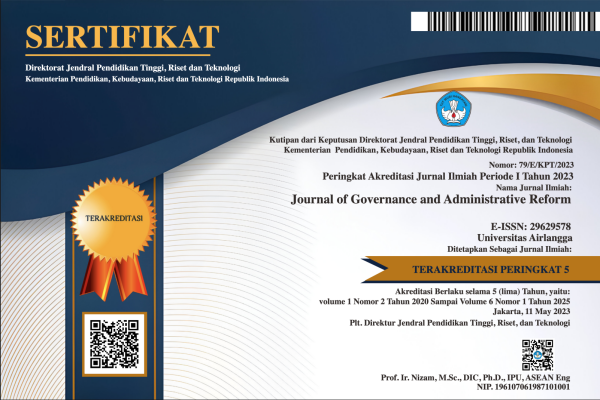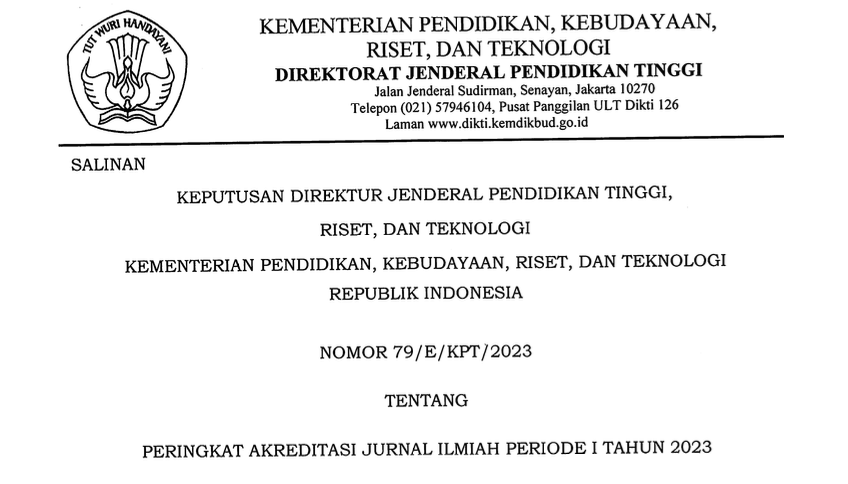Corporate Social Responsibility and Human Capital Development In Nigeria: Case Study on Guaranty Trust Bank, Gombe State, Nigeria
Downloads
Abstract
This research evaluates human capital development and corporate social responsibility (CSR) in Nigeria, using Guaranty Trust Bank Gombe as a case study, covering the period from 2015 to 2020. The study aims to identify the causes of low human capital development in Nigeria and propose solutions to this persistent issue. Three hypotheses guide this study: the impact of CSR, the growth of human capital in the host community, and a combination of both. The methodology includes data from both primary and secondary sources, analyzed using tables, percentages, questionnaires, oral interviews, and basic statistical methods. Findings indicate that the host community has benefited from Guaranty Trust Bank's human capital development initiatives, with many respondents expressing satisfaction and acknowledging the presence of skills acquisition programs. The study recommends that Guaranty Trust Bank adopt a long-term, sustainable approach to its CSR programs, partnering with relevant stakeholders such as government bodies, non-governmental organizations, and community-based groups to maximize resources and skills.
Keywords: corporate social responsibility, human capital development, Guaranty Trust Bank, Gombe State, Nigeria
Abstrak
Penelitian ini mengevaluasi pengembangan sumber daya manusia dan tanggung jawab sosial perusahaan (CSR) di Nigeria, dengan menggunakan studi kasus Guaranty Trust Bank Gombe, yang mencakup periode 2015 hingga 2020. Penelitian ini bertujuan untuk mengidentifikasi penyebab rendahnya pengembangan sumber daya manusia di Nigeria dan mengusulkan solusi untuk masalah yang terus-menerus ini. Ada tiga hipotesis yang memandu penelitian ini: dampak CSR, pertumbuhan sumber daya manusia di komunitas tuan rumah, dan kombinasi keduanya. Metodologinya mencakup data dari sumber primer dan sekunder, dianalisis menggunakan tabel, persentase, kuesioner, wawancara lisan, dan metode statistik dasar. Temuan menunjukkan bahwa masyarakat setempat telah memperoleh manfaat dari inisiatif pengembangan sumber daya manusia Guaranty Trust Bank, dan banyak responden menyatakan kepuasan dan mengakui adanya program perolehan keterampilan. Studi ini merekomendasikan agar Guaranty Trust Bank mengadopsi pendekatan jangka panjang dan berkelanjutan terhadap program CSR-nya, bermitra dengan pemangku kepentingan terkait seperti badan pemerintah, organisasi non-pemerintah, dan kelompok berbasis masyarakat untuk memaksimalkan sumber daya dan keterampilan.
Kata kunci: tanggung jawab sosial perusahaan, pengembangan sumber daya manusia, Guaranty Trust Bank, Negara Bagian Gombe, Nigeria.
Amole, B. B., Adebiyi, S. O. & Awolaja, A. M. (2012). Corporate Social Responsibility and Profitability of Nigeria Banks – A Casual Relationship. Research Journal of Finance and Accounting, 3(1), 6-17
Babalola, Y. A. (2012). The Impact of Corporate Social Responsibility on Firms"Ÿ Profitability in Nigeria. European Journal of Economics, Finance and Administrative Sciences, 45(2012), 41-50
Bénabou, Roland & Tirole, Jean (2009). "Individual and Corporate Social Responsibility” WP, 09-109, Research Group: Behavioral and Experimental Economics November 11, 2009, Toulouse School of Economics
Bessong, P. K. & Tapang, A. T. (2012). Social Responsibility Cost and Its Influence on the Profitability of Nigerian Banks. International Journal of Financial Research, 3(4), 1-5
Branco, M. C. & Rodrigues (2008). Factor Influencing Social Responsibility Disclosure by Portuguese Companies. Journal of Business Research, 29( 1), 21-41.
Calderon, I. & Mario, P. (2011) "CSR in Latin America and South East Asia Analysis of the Corporate Communication of Top Local Companies”, International Research Journal of Finance and Economics, Issue 73 (2011) © Euro-Journals Publishing, Inc. 2011, http://www.eurojournals.com/finance.htm
Devi, F., Chitra, J., Anand & Latha, E (2011) "Corporate Social Responsibility: Managing Issues for Human Resources Department in IT Sector”, International Journal of Exclusive Management Research (IJEMR) –Vol 1 Issue 6 - http://www.exclusivemba.com/ijemr
Frooman, M. (2019). The social responsibility of business is to increase its profits. New York Times Magazine, September 13: 32- 33, 122, 124, 126
Grooves, H. & Kipkembo, G. (2015). The Impact of Chinese Language Lessons In A Virtual World On University Students' Self-Efficacy Beliefs. Australasian Journal of Educational Technology, 28(3).
Hamann, K., Kapelu, T., Sonnenberg, G., Mackenzie, F. & Hollesen, A. (2005). Social Responsibility Cost and Its Influence on the Profitability of Nigerian Banks. International Journal of Financial Research, 3(4), 1-5.
Haskel, J., Hawkes, D. (2003). How much of the Productivity Spread is Explained by Skills? UK Evidence Using Matched Establishment /Workforce Survey Data, CeRIBA discussion paper.
Hopkins, Michael (2004). "Corporate Social Responsibility: An Issues Paper” Policy Integration Department, Working Paper No. 27 World Commission on the Social Dimension of Globalization International Labor Office Geneva, May 2004, Copyright © International Labour Organization 2004
Ismail, T. N. T. (2011) "Corporate Social Responsibility: The Influence of the Silver Book”, International Journal of Business And Management Studies, Vol 3, No 2, 2011, pp. 371-383
Kamal, G. (2018). Utilitarian, Managerial and Relational Theories of Corporate Social Responsibility. International Journal of Management Reviews, 9(4), 347-373.
Katrina, S. (2021). "Corporate Social Responsibility in the Textile Industry International Overview”, IVAM Research and Consultancy on Sustainability Roetersstraat 33 - 1018 WB Amsterdam – Postbus 18180 - 1001 ZB Amsterdam, 2006
Kim, J. K. (2011) "Effects of Corporate Social Responsibility on B to B Relational Performance”, International Journal of Business and Management, Vol. 6, No. 2; pp. 24-34,
Kirfi, M. M. & Galli, I. (2015). The Impact of Training and Development on Organizational Efficiency and Effectiveness: Evidence from Gombe State University. Sokoto Journal of Management Studies, Vol. 18, No 1,
Krishnan, G., Sandeep, K., Balachandran, T. & Rakesh, Y. (n.d.). "Corporate Social Responsibility as a Determinant of Market Success: An Exploratory Analysis with Special Reference to MNCS in Emerging Markets”, Marketing Strategies for Firms in Emerging Markets, IIM K – NASMEI International Conference.
Luper, I. (2013). Rethinking Banks Corporate Social Responsibility (CSR) in Nigeria. International Journal of Finance and Accounting, 2(1), 30-36.
Maç, M., Sevgi, G., Dönmez, H. & Çalış, S. (2011). "Labor Practices in the Content of Corporate Social Responsibility: An Evaluation on Automotive Manufacturer Companies' Websites”, International Journal of Business and Management Studies, Vol. 3, No 2, , pp. 317-330
Mahlouji, G., Hossein, A., Anaraki, J., & kalbasi, N. (2009) "Corporate Social 22.Responsibility Towards Social Responsible Innovation: A Dynamic Capability Approach”, International Review of Business Research Papers, Vol. 5 No. 6, pp.185-194
McWilliams A.; Siegel, D, S. & Wright, P. M. (2005) "Corporate Social Responsibility: Strategic Implications”, Working Papers in Economics, Number 0506, May 2005, Department of Economics, Rensselaer Polytechnic Institute, 110 8th Street, Troy, NY,
Miller, T., DeSimone, K., Harris, M. & Brian, G. (2012). Human Resource Management (10th ed.), Singapore: South-Western.
Nadler, T. & Nadler, S. (1994). Management and Organizational Behavior 8th ed. Prentice Hall. Pearson Education, Edinburg Gate.
Obi, D. (2013). CSR: 8 banks Spend N1.9bn to Make Social Impact, This Business day Newspaper of July 9th, available at: www.businessdayonline.com Accessed on October, 18th, 2013
Olanrewaju, K. (2012). The 2011 New Orleans International Academic Conference, New Orleans, Louisiana USA 2011
Olayinka, M. U. & Temitope, O. F. (2011). Corporate Social Responsibility and Financial Viability. International Journal of Management. 78(3), 23-21
Rechard, E .O & Okoye, V. (2013). Impact of Corporate Social Responsibility on the Deposit Money Banks in Nigeria. Global Business and Economics Research, 2(3), Available online at wwww.journal.globejournal.org. accessed on 23th November, 2013.
Reinhardt, Forest L.; Stavins, Robert, N. & Vietor, Richard H. K. (2008) "Corporate Social Responsibility Through an Economic Lens” Resources for the Future, April 2008, RFF - DP 08-12, 1616 P St. NW Washington, DC 20036, 202-328-5000 www.rff.org
Samuel, D. (2011). Training and Performance Optimization. New England Journal of Management, 365(19), 1790-1800.
Sriramesh, J., Palom, D., Wakati, L. & Pomal, E. (2007). "CSR in Latin America and South East Asia Analysis of the Corporate Communication of Top Local Companies”, International Research Journal of Finance and Economics, Issue 73 (2011) ©
Sriramesh, K.; Chew, W. N; Soh, T. T. & Luo W. (2007). Corporate Social Responsibility and Public Relations: Perceptions and Practices in Singapore, Paper submitted to the 14th International Public Relations Symposium, Bled, Slovenia, July 3 - 5, 2007
Subramaniam, F. & Youndt, H. (2005). Working Memory Capacity as a Dynamic Process. Frontiers in Psychology, 3, 567.
Tamkin, P. (2005). The contribution of Skills to Business Performance, UK: Institute for Employment Studies (IES)
World Bank (2003) Public Policy for Corporate Social Responsibility July 7–25, 2003, WBI Series on Corporate Responsibility, Accountability, and Sustainable Competitiveness, edited by DjordjijaPetkoski and Nigel Twose, The World Bank Institute, and the International Finance Corporation.
Zu, L. & Song., L. (2008) "Determinants of Managerial Values on Corporate Social Responsibility: Evidence from China”, IZA Discussion Paper No. 3449, April 2008 Forschungsinstitut, zurZukunft der Arbeit, Institute for the Study of Labour
Copyright (c) 2024 Authors

This work is licensed under a Creative Commons Attribution-ShareAlike 4.0 International License.
Jurnal Governance and Administrative Reform by Unair is licensed under a Creative Commons Attribution-ShareAlike 4.0 International License.
1. The journal allows the author to hold the copyright of the article without restrictions.
2. The journal allows the author(s) to retain publishing rights without restrictions
3. The legal formal aspect of journal publication accessibility refers to Creative Commons Attribution Share-Alike (CC BY-SA).






















